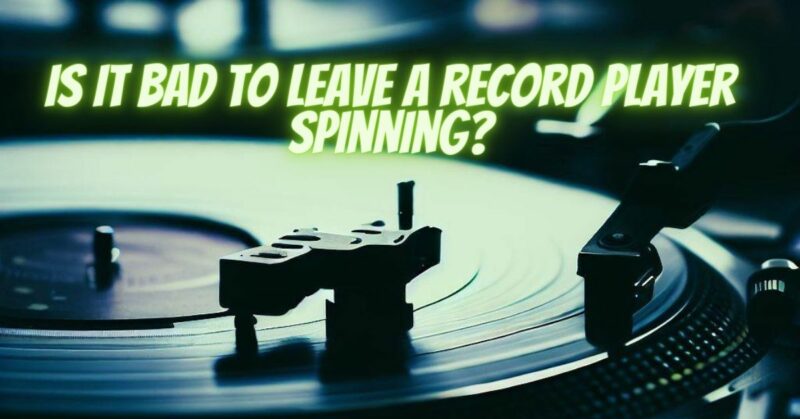As vinyl records continue to captivate music enthusiasts, questions arise about the best practices for operating turntables. One common concern is whether it is bad to leave a record player spinning continuously. In this article, we will explore the impact of continuous playback on your turntable and vinyl records to help you make informed decisions about its usage.
The Effect of Continuous Playback
Leaving a record player spinning continuously for extended periods can have both positive and negative effects, depending on various factors:
- Wear on the Vinyl Record: Continuous playback can cause wear on the vinyl record’s grooves over time, particularly if you leave the needle on the same spot for an extended duration. Prolonged and repetitive playback in the same area can lead to increased groove damage, resulting in reduced sound quality.
- Stylus Wear: The stylus (needle) is in direct contact with the record’s grooves during playback. Continuous use can cause wear on the stylus, affecting its performance and longevity. A worn stylus may produce distorted sound and even damage the vinyl.
- Motor and Turntable Wear: Continuous operation can put additional strain on the turntable’s motor and components, potentially leading to premature wear or malfunctions. Some turntables are designed for continuous playback, while others may not be built for prolonged use without breaks.
Factors to Consider
While continuous playback has potential drawbacks, several factors can influence its impact:
- Turntable Quality: High-quality turntables are generally more robust and designed to handle continuous use better. They often have features like high-quality bearings and motors, vibration isolation, and durable components that contribute to their longevity.
- Stylus Quality: A high-quality stylus is less likely to cause significant wear on the record grooves during continuous playback. It is essential to use a well-maintained and appropriately sized stylus for your records.
- Prolonged Use vs. Intermittent Use: Intermittent use with breaks between play sessions can help reduce the risk of excessive wear on the record and turntable components. If you plan to listen to music for an extended period, consider taking short breaks to give the turntable and records a rest.
- Vinyl Record Condition: The condition of your vinyl records is crucial. Records in poor condition, such as those with visible scratches or dust particles, are more susceptible to damage during continuous playback.
Best Practices
To maximize the lifespan of your turntable and vinyl records, consider the following best practices:
- Avoid Extended Continuous Playback: Whenever possible, avoid leaving your record player spinning continuously for hours on end. Take breaks between play sessions to minimize wear on the records and turntable components.
- Regular Maintenance: Clean your records regularly to remove dust and debris that can affect sound quality and potentially damage the stylus. Keep the stylus in good condition and replace it when necessary.
- Invest in Quality: Consider investing in a high-quality turntable with durable components and features that reduce wear and vibration.
While continuous playback on a record player can cause wear on vinyl records and turntable components, various factors influence its impact. High-quality turntables and well-maintained styluses are less likely to cause significant damage. To preserve the longevity and sound quality of your records, it is advisable to practice intermittent use with breaks between play sessions and perform regular maintenance. By taking proper care of your turntable and vinyl records, you can enjoy many hours of immersive and enjoyable vinyl playback for years to come.


